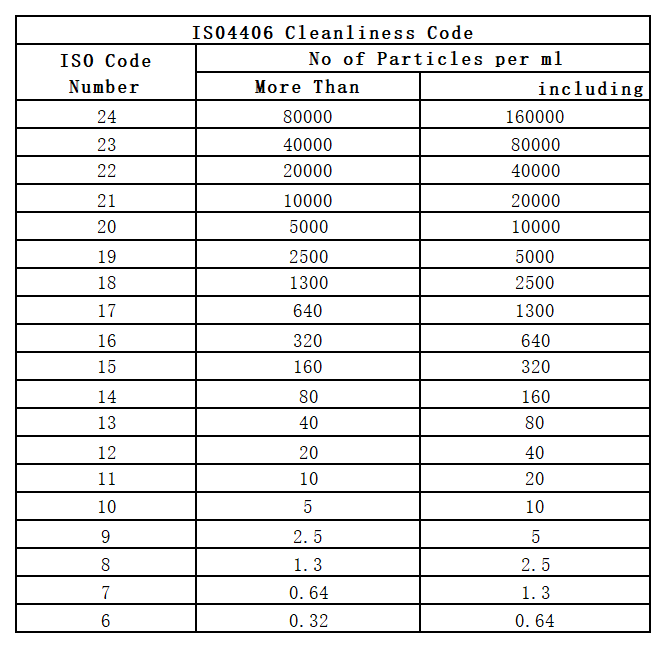Understanding ISO Codes in the Hydraulic Field
In the Hydraulic Field, maintaining proper fluid cleanliness is of paramount importance to ensure optimal
Performance and longevity of Hydraulic Systems. ISO Cleanliness Codes provide a standardized method for
assessing and monitoring the cleanliness levels of hydraulic fluids. In this article, we will delve into the
intricacies of ISO Cleanliness Codes, highlight their significance in hydraulic systems, explore measurement
techniques, and discuss best practices for achieving ISO cleanliness goals.
1.Understanding ISO Cleanliness Codes
ISO Cleanliness Codes are numerical ratings that quantify the level of particulate contamination present in hydraulic fluids.
These codes are defined by the International Organization for Standardization (ISO) and consist of three numbers
separated by slashes (e.g., 18/16/13). Each number represents a specific particle size range
and corresponding contamination level within that range.
The first number indicates particles larger than 4 microns, the second number represents particles larger than 6 microns,
and the third number denotes particles larger than 14 microns.
The lower the ISO Code value, the cleaner the fluid is considered to be.

2. The Importance of ISO 4406 Cleanliness Codes:
Maintaining high cleanliness standards is vital for hydraulic systems and fluid systems.
An efficient filtration system plays a critical role in achieving and maintaining cleanliness standards.
Contaminated oil can block filters, reduce engine airflow, and increase wear on engine components unnecessarily.
To ensure compliance with ISO Fluid Cleanliness Standards, it is essential to invest in quality oil storage and filtration systems.
These measures will help keep your machinery's fluid systems clean and operating at optimal performance levels.
3. How to Measure ISO Cleanliness Codes:
Accurate measurement of particulate contamination is essential for determining compliance with desired ISO cleanliness standards.
The most common method involves utilizing particle counters capable of detecting various
particle sizes present in a given volume of fluid sample.
These counters count individual particles as they pass through sensors using techniques such as
light scattering or laser-based methods. The resulting data is then analyzed against predetermined
size ranges specified in ISO codes to assign appropriate cleanliness ratings.
4. Best Practices for Achieving ISO Cleanliness Goals:
To achieve desired ISO cleanliness goals effectively, consider implementing these best practices:
a) Filtration Systems: Utilize properly sized filtration systems capable of removing contaminants
down to required particle sizes specified by target ISO codes.
b) Regular maintenance: Establish routine maintenance schedules for replacing filters at
recommended intervals based on system requirements or manufacturers' guidelines.
c) Contamination Control Procedures: Implement proactive measures such as regular sampling and analysis
routines along with effective storage practices to minimize contamination risks during handling or storage processes.
d) Education and Training: Ensure personnel involved in maintenance activities receive adequate training on
proper handling procedures related to filtration equipment usage, sampling techniques, and interpreting results accurately.
e) Continuous Monitoring: Employ real-time monitoring solutions that provide instant feedback on system conditions
allowing timely corrective actions when deviations from target cleanliness levels occur.
International Organization for Standardization
ISO standards are voluntary but widely adopted globally. They help facilitate international trade by ensuring
consistency and compatibility between products, services, and systems across different countries.
Compliance with ISO standards can enhance credibility for organizations by
demonstrating their commitment to quality management practices.
Why Choose SAIVS™ as Your Supplier?
With 20 years of industry experience, SAIVS is a leading Chinese manufacturer of high-quality tools, offering competitive pricing and excellent customer service.We pride ourselves on exceptional quality control, extensive experience, and comprehensive after-sales service.